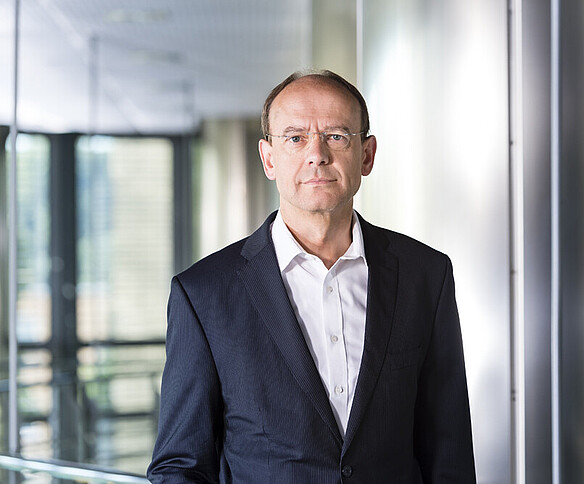IT can contribute to greater sustainability, that is undisputed. But who will ensure that IT itself becomes greener? The answer: A concept that has been discussed for some time and is now finally making its way into development designs. The talk is of "Greening of IT". In this interview, Bernhard Kube, Vice President Technology Consulting, introduces the topic and gives tips on how to get started with resource-optimized and more sustainable IT.
More efficiency and lower costs with sustainable IT

What exactly is "Greening of IT" - and how does it differ from similar terms such as "Green IT" or "Greening by IT"?
In a nutshell, the goal of Greening of IT is to reduce the use of resources within IT without compromising its performance. Here, IT itself is at the center of the optimization efforts and should be made more efficient and environmentally friendly. A nice side effect, especially in the cloud, is that this optimization also translates into lower costs. This can happen by optimizing system architecture, design, and software development in such a way that resource and power consumption can be reduced to a minimum. Greening by IT, on the other hand, includes all digital technologies that contribute toward a more sustainable world. For example, when we optimize logistics or material consumption through digitization or send digital documents instead of printed stacks of paper in everyday life. Both Greening of IT and by IT are sub-areas of Green IT. It generally deals with how the IT sector contributes to greater sustainability.
Why is it important to address this issue?
The IT sector is now responsible for two to four percent of global CO2 emissions. In particular, the operation of hardware, production, transport, and disposal are responsible for these figures. And the demand for hardware will continue to rise in the future. At the same time, experts expect hardware to become less and less efficient in the upcoming years. The semiconductor industry is reaching its physical limits. This will make it more difficult to compensate for the growing demand for computing power mentioned above. Added to this are the recently tightened requirements in the area of sustainability, for example with regard to regulatory and customer requirements. Companies must assume that the pressure to act will increase significantly in the short to medium term.
"It is imperative that we find a way to deal with existing technologies as efficiently as possible."
Bernhard Kube
Vice President Technology Consulting
It is therefore imperative that we find a way to deal with existing technologies as efficiently as possible. Greening of IT can play this role. At LHIND, we use Greening of IT in particular for the development of applications. We have therefore switched from memory- and resource-intensive JAVA stacks to much more economical software development stacks, for example based on the Go programming language and cloud-native architecture. It allows us to increase the service life of the software and achieve lower hardware requirements with optimum performance. This conserves resources and saves costs.
ALet's suppose my company wants to look into sustainable IT and Greening of IT. Where and how exactly should we start?
The topic is very multi-faceted, the paths to implementation very individual. Nevertheless, there are a few points that IT managers can use as a guide. First, it makes sense to determine the status quo. In a first step, it should be clear which data must also be collected in IT in accordance with legal requirements, such as the Corporate Sustainability Reporting Directive (CSRD). In this first phase, energy consumption should also be measured, corresponding emissions calculated, the life cycle of the software used should be considered holistically, and the maturity of sustainability integration in corporate IT and its processes should be assessed. In addition, the existing IT architecture, the software design used and the respective specifications for software development must be reviewed.
Once the current status has been determined, the next step is implementation. Approaches are defined as to how the analyzed structures and processes can be made more sustainable. These approaches are as diverse as the tasks in the IT environment. From IT development to infrastructure, purchasing and the training concept, there are opportunities There are opportunities from IT development to infrastructure, purchasing and the training concept. However, companies should always keep the three pillars of sustainable IT in mind: IT architecture, software design and software development. If these are aligned with each other, you are already a good deal further ahead. Incidentally, these pillars also offer further potential for efficiency: With a modular IT architecture, for example, you benefit from easier implementation of new components. This enables companies to respond more quickly to changes or new market requirements. And the path to the cloud can also provide a boost in efficiency compared with the company's own data center.
Lufthansa Industry Solutions is a service provider for IT consulting and system integration. This Lufthansa subsidiary helps its clients with the digital transformation of their companies. Its customer base includes companies both within and outside the Lufthansa Group, as well as more than 300 companies in various lines of business. The company is based in Norderstedt and employs more than 2,300 members of staff at several branch offices in Germany, Albania, Switzerland and the USA.
